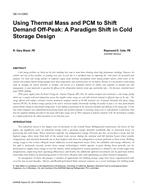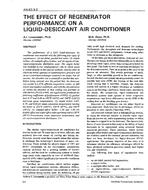The effect of wall material configuration on dynamic thermal performance is analyzed for six typical wall configurations. Due to different arrangements of concrete and insulation layers, these walls present a wide range of dynamic thermal properties. Newly developed thermal structure factors are used in selection and thermal analysis of these walls. A simple one- room model of the building exposed to diurnal periodic temperature conditions is analyzed to give some basic information about the effect of wall material configuration on thermal stability of the building. Whole building dynamic modeling using DOE- 2.1E was employed for energy analysis of a one-story residential building with various walls for six different U.S. climates. Best thermal performance is obtained for walls with massive material layers at the inner side, in good thermal contact with the interior of a building.
AUTHOR: Elisabeth Kossecka, Ph.D., Jan Kosny, Ph.D.
CITATION: Thermal Performance of the Exterior Envelopes of Buildings VII
KEYWORDS: December, Florida, 1998
YEAR: 1998
Citation: Thermal Performance of the Exterior Envelopes of Buildings VII
Product Details
- Published:
- 1998
- File Size:
- 1 file , 360 KB
- Product Code(s):
- D-8055


